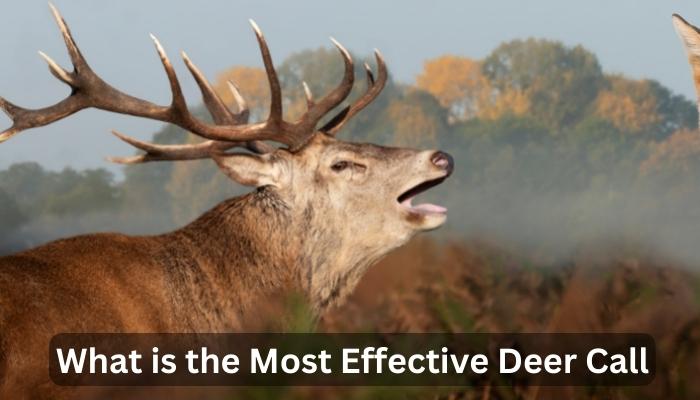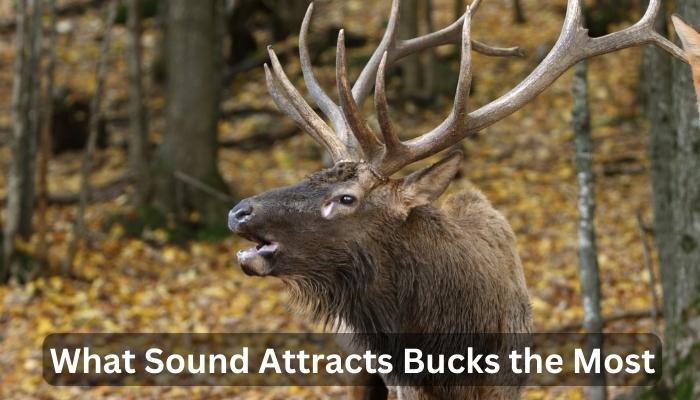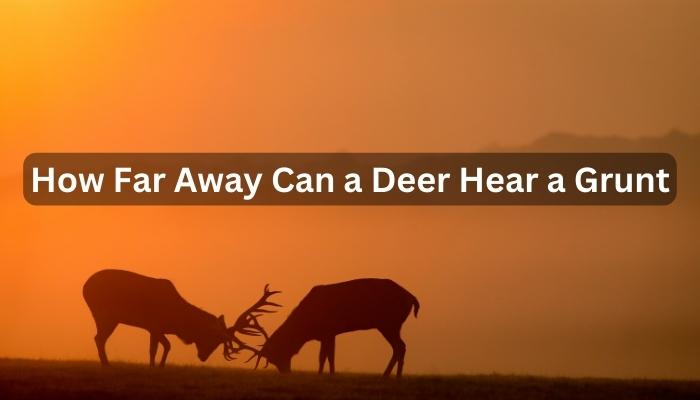Whether you’re an experienced hunter or a novice, knowing what deer calls and sounds to make can be the difference between success and failure. From grunt calls that lure in bucks to doe bleats that bring does running, there’s a call for every situation. This blog post will share some of the most effective Deer Calls & Sounds Every Hunter Should Know.
As a hunter, it’s essential to know what deer calls and sounds to listen for. By understanding the different vocalizations of deer, you can better locate and stalk your prey. So let’s explore some of the most common Deer Calls &.
Contents
Deer Calls & amp; Sounds Every Hunter Should Know.
There are three main things. So, You should read them one by one.
1. Buck Grunt: A buck grunt is a low-pitched sound that bucks make when trying to attract does. This call is usually made during the breeding season but can also be heard year-round.
2. Fawn Distress Call: A fawn distress call is a high-pitched cry that young deer make when they’re in danger or separated from their mothers. This call is usually only heard during the spring and summer months.
3. Buck Snort: A buck snort is a sharp, loud noise that bucks make when they sense danger. This call is often used as an alarm signal to warn other deer of potential predators in the area.
What is the Most Effective Deer Call?

A few types of deer calls are more effective than others. Grunt calls and doe bleats are two of the most effective deer calls when used in the right situation.
Grunt calls imitate the sounds made by bucks during the rutting season. These sounds indicate to other bucks that they are in the area and looking for does. Bucks will often respond to these calls by coming into the open to see what is happening.
On the other hand, Doe bleats to imitate the sound of a doe in heat. This can attract both bucks and does to your location.
What Sound Attracts Bucks the Most?

One of the most common questions we get asked is, “What sound attracts bucks the most?” There are a lot of different opinions out there, but the answer is pretty simple. The sound that bucks are most attracted to is the sound of other deer.
More specifically, the sound of does in estrus (heat). When a doe enters estrus, she will begin making a high-pitched bleat. This bleat is designed to attract bucks and let them know she is ready to mate.
Bucks will often travel long distances to find a hot doe, and they will compete with other bucks for her attention. So, if you want to attract bucks during the breeding season, your best bet is to mimic the sounds of does in heat. You can use an estrous bleat call or make high-pitched noises yourself.
Either way, the key is ensuring your sounds are loud enough to carry long distances.
What Does a Long Buck Grunt Mean?
A buck grunt is a sound that male deer make to attract females and warn other males. The grunt is made by forcing air through the nostrils, which causes the vocal cords to vibrate. Buck grunts are usually long and low-pitched, but they can vary in length and pitch depending on the situation.
Buck grunts are used to communicate a variety of messages. For example, a buck may grunt to let a doe know he is interested in mating. He may also use a grunt to warn another buck who has strayed into his territory.
Bucks sometimes grunt at human hunters as a way of saying, “stay away from my ladies!” So, what does a long buck grunt mean? It could mean many things, but it’s typically either an expression of interest in mating or a warning to stay away.
Either way, it’s sure to get the attention of any nearby deer – so be prepared for anything if you hear one while out in the woods!
How Often Should You Use a Deer Bleat Call?
There is no definitive answer to this question, as it depends on several factors, including the time of year and the specific hunting situation. However, it is recommended that hunters use deer bleat calls sparingly and only when they are confident that doing so will not spook the animals. Bucks are exceptionally responsive to bleat calls during the fall mating season (rut), so this is often an ideal time to use them.
However, it is still essential to be cautious, as overuse of these calls can cause bucks to become wary and avoid areas where they hear frequent calling. Generally, using a deer call once every few days or a week is probably best. This will help ensure that the animals do not become habituated to the sound and continue to respond positively when they hear it.
How Far Away Can a Deer Hear a Grunt

When it comes to how far away a deer can hear a grunt, there is no definitive answer. It depends on various factors, including wind direction and speed, terrain, vegetation, and the grunting sound being made. In general, however, deer have acute hearing and can pick up sounds from quite a distance.
So why do hunters grunt? Grunting serves as an effective way to communicate with deer and lure them in close range. When done correctly, grunting can make deer feel comfortable enough to approach within shooting range.
There are a variety of different types of grunts that can be used when hunting deer. Each has its own purpose and works best in certain situations. For example, social grunts are used to mimic the sounds bucks make when they interact with each other during the breeding season.
These grants can stop a buck in its tracks or bring one running in from afar. On the other hand, estrous grunts are designed to imitate the sound of does in heat and are often used by hunters hoping to draw in big bucks looking for mates.
No matter what type of grunt you use, it’s important to remember that timing is everything. Grunt too early or too late; you could spook the deer or alert nearby predators to your presence.
Final Thought
Deer calls and sounds are an essential part of hunting. Hunters can use a few different types of calls to attract deer, and each has its own purpose. Grunt calls imitate a buck calling to a doe, while bleat calls mimic the sound of a doe in heat.
Snort-wheezes are used as a warning call and can be used to scare off other animals or alert other deer to danger. Hunters should also be familiar with the sounds deer make when they are alarmed or running away. This can help them avoid being detected by their prey.

